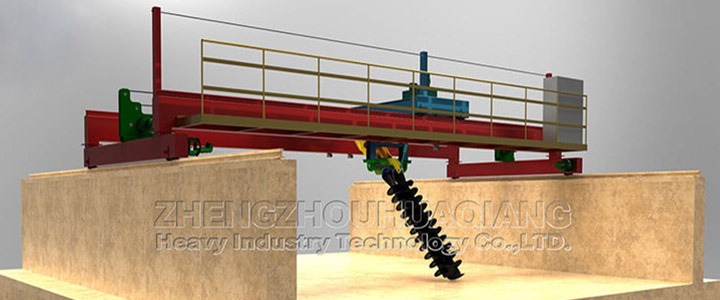Double screws turning machine is suitable for fermentation turn of livestock manure, sludge garbage, sugar mill filtrate and other compost, with high turner efficiency, it's important equipment for organic fertilizer production line. What are the precautions for the use of screw turning machine and how to maintain it in daily use?
1.Before operation, check, carry out no-load operation and load test operation.
1) Inspection of screw turning machine before commissioning
Check whether the lubricating oil of reducer and lubricating points has been adequately added.
2) Check the voltage of the power supply and do not turn on when it exceeds the standard range.
3) Check whether the joints of motor and electrical components are reliable, and use wire to ground the motor to ensure safety.
4) Check whether the connecting parts and bolts are firm or not. If loose, tighten the welding.
5) Check the stacking height of materials.
2. No-load commissioning of organic fertilizer turning machine
If the rotation direction is reversed, the turning equipment should stop immediately, change the three-phase circuit connector to change the rotation direction. When the equipment is running, check the sound of the reducer, touch the temperature of the bearings, and observe whether the rotating impeller rubs against the ground.
3. Load commissioning of organic fertilizer turning machine
1). Start up the dump equipment, check whether the machine is working properly, adjust the position of the dumper, and then adjust the equipment to normal speed for dumper. When rotating blades hit the ground, the drum of the dumper should be lifted in time to avoid damaging the equipment.
2). In the process of load test run, if there is abnormal sound, check it.
3). Before shutting down the equipment, check whether there is any material in front of the turning drum, and then lift the turning drum to the top of the highest accumulation point of the material in the tank.
